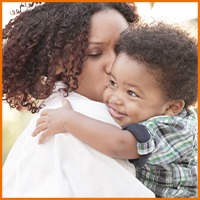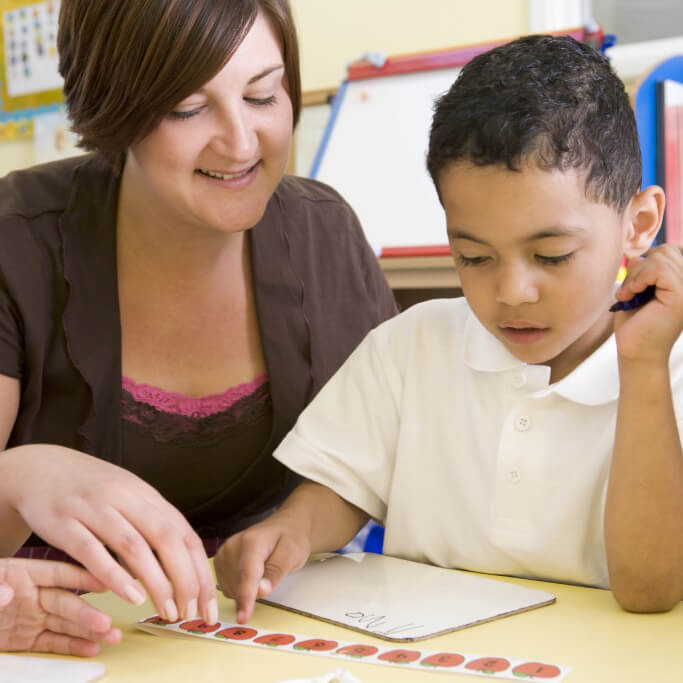Developmental Milestones for Toddlers
As your toddler grows, so too will their skills, interests, and personalities. This article can help you understand what to expect in your one- and two-year olds.
As your toddler grows, so too will their skills, interests, and personalities. This article can help you understand what to expect in your one- and two-year olds.
 Moving beyond babyhood and into unique personality
Moving beyond babyhood and into unique personalityOften when people think of toddlers they assume “terrible twos,” and because of that, toddlers have sort of a bad rap. I mean, really, toddlers are 95% super sweet and adorable! As they explore their abilities, begin to assert independence, and forge an identity, it is totally normal to push boundaries once in a while.
Toddler development is where that little person becomes a more of an individual, wanting to exercise more control over things, and wanting to be understood. Gaining the ability to communicate is a huge step in and making all of that happen. But often toddler speech is still quite hard to understand, and that can create frustration (and some major mood swings).
Just as it’s natural for the toddler to rebel, it’s natural for parents to worry. Parents who wonder if their toddler is on track for developmental milestones can find solace in knowing they are not alone. Children develop at their own pace, and there’s not an exact time they’ll learn a specific skill, but common milestones do help establish a general idea of what to watch for and when. A recent study from the Centers for Disease Control (CDC) found that nearly 18% of children in the U.S. have a developmental disability1.
Resources for parents to gauge their toddler’s developmental progress are easy to find, and pediatricians are always willing to lend an ear to concerned parents. If there are delays, early intervention services are accessible to all and can significantly improve long-term outcomes.
 Early childhood expert Jane Squires, Ph.D., stresses the importance of involving parents in the monitoring of young children’s development. After all, who knows the child better? Squires is lead author of the Ages & Stages Questionnaires®, Third Edition (ASQ®-3). ASQ-3 is often used by pediatricians and child care centers, in conjunction with parents and caregivers, as an initial screening to help identify young children at risk for developmental delays.
Early childhood expert Jane Squires, Ph.D., stresses the importance of involving parents in the monitoring of young children’s development. After all, who knows the child better? Squires is lead author of the Ages & Stages Questionnaires®, Third Edition (ASQ®-3). ASQ-3 is often used by pediatricians and child care centers, in conjunction with parents and caregivers, as an initial screening to help identify young children at risk for developmental delays.
What sorts of developmental milestones should parents notice, when it comes to typically developing children between 1 and 3 years of age? The CDC gives us a breakdown on some noteworthy behaviors for most toddlers.
At 1 year: waves “bye-bye”; calls a parent “mama” or “dada” or another special name; understands “no” (pauses briefly or stops when you say it); puts something in a container, like a block in a cup; looks for things they see you hide, like a toy under a blanket; pulls up to stand; walks, holding on to furniture; drinks from a cup without a lid, as you hold it; picks things up between thumb and pointer finger, like small bits of food.
At age 18 months: moves away from you, but looks to make sure you are close by; points to show you something interesting; looks at a few pages in a book with you; help you dress them by pushing arms through sleeves or lifting up feet; tries to say three or more words besides “mama” or “dada”; follows one-step directions without any gestures, like giving you the toy when you say “Give it to me”; plays with toys in a simple way, like pushing a toy car; walks without holding onto anyone or anything; scribbles; climbs on and off a couch or chair without help.
By the end of year 2: notices when others are hurt or upset, like pausing or looking sad when someone is crying; points to things in a book when you ask, like “Where is the bear?”; says at least two words together, like “More milk”; tries to use switches, knobs, or buttons on a toy; plays with more than one toy at the same time, like putting toy food on a toy plate; kicks a ball; runs; walks (not climbs) up a few stairs with or without help; eats with a spoon.
The American Academy of Pediatrics recommends developmental screening and autism screening for all children at age two.

“The most important thing is scaffolding or seeing where the child is, taking them to the next step,” says Squires. “It’s the most important thing that parents can do for their children.” Reaching that next step can be fun—because you can get there in large part through play. Being present and engaged with your child is a priceless support, both for fostering healthy development and for having the kind of close, attentive relationship that allows for early identification if there is delay.
Squires suggests some simple activities parents can try with their children:
With babies 12–16 months of age:
With toddlers 16–20 months of age:
With babies 20–24 months of age:
With toddlers 24–30 months of age:
With toddlers 30–36 months of age:
 Parents can go online anytime and try an ASQ developmental screener for free at www.agesandstagesresearch.com (no obligation; and no personal names or addresses are collected). Each questionnaire takes about 10–15 minutes to complete. Answer based on your observations of your child in natural environments, looking at communication, gross motor, fine motor, problem solving, and personal-social skills. You can see a copy of your child’s screening results by email and/or download at end of the session, and get targeted play and learning activities that fit your child’s age, as well as suggested resources if you have concerns about risk for delay.
Parents can go online anytime and try an ASQ developmental screener for free at www.agesandstagesresearch.com (no obligation; and no personal names or addresses are collected). Each questionnaire takes about 10–15 minutes to complete. Answer based on your observations of your child in natural environments, looking at communication, gross motor, fine motor, problem solving, and personal-social skills. You can see a copy of your child’s screening results by email and/or download at end of the session, and get targeted play and learning activities that fit your child’s age, as well as suggested resources if you have concerns about risk for delay.
In the event that delays are suspected, don’t panic! Identifying possible delays early puts you on the right path to getting the supports in place to help your child achieve better outcomes. Discuss your child’s development and any concerns with your pediatrician. They’ll have lots of advice, as well as referral options for you to pursue early intervention services if needed. You can also do some homework online, including some of the additional resources shown on this page.
Additional resources for parents:
Ages & Stages Questionnaires
www.agesandstages.com
www.agesandstagesresearch.com
Centers for Disease Control and Prevention
www.cdc.gov/ncbddd/actearly/milestones
www.cdc.gov/ncbddd/childdevelopment/positiveparenting/toddlers.html
https://www.cdc.gov/ncbddd/actearly/concerned.html
American Academy of Pediatrics
https://healthychildren.org/English/ages-stages/toddler/Pages/default.aspx
***
1 https://www.aappublications.org/news/2019/09/26/disabilities092619

“We chose ASQ because it is easy to do, low cost, culturally sensitive, and it meets our purpose of basic screening for our children’s development. Our infant teachers base their curriculum on each individual child based on the ASQ.”
Kathy Bostic, Program Supervisor, Pinehurst Child Care Center